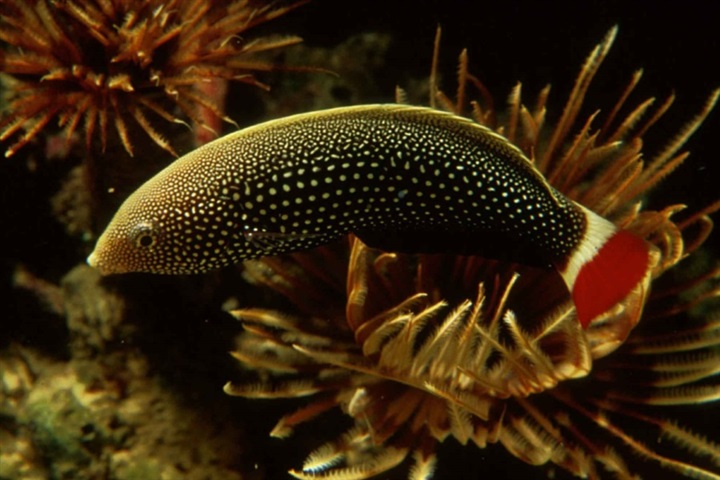Anampses chrysocephalus

| Latin name | Anampses chrysocephalus |
|---|---|
| Local name | Red tail wrasse |
| Family | Labridae - Anampses |
| Origin | Japan, Central/West Pacific |
| Max length | 17 cm (6.7") |
| Minimum volume |
500 l (132 gal) |
|---|---|
| Hardiness |
Delicate |
| Suitable for aquarium |
Experience, preparation and extra care required |
| Reef safe |
Always reef safe |
| Aggressiveness | Docile but might be aggressive towards similar species of same gender |
| Recommended |
Other invertebrates Small crustaceans (Krill, mysis, artemia...) Zooplankton (Cyclops, pods...) |
|---|
This species is hard to keep alive and thriving.
This species is known to jump out of open aquaria.
This species is very sensitive during transportation and acclimatizing into the aquarium.
There is a greater chance of success with this species if one can supply a living feed to allow it to adapt to the tank.
This species needs a minimum of 2 inch (5 cm) of sand in the aquarium bottom, so it can dig itself down when afraid or needing to sleep.
This species will better acclimatize to the aquarium`s condition if introduced, when young.
Very small individuals can be very delicate.
This fish requires feeding several times a day, especially when newly added.
When the fish can find its natural food in the aquarium it requires less frequent feeding.
This species comes in multiple color variations which can make identification problematic.
This species functions best as a pair (one male, one female), or one male with several females.
This species is very shy and docile, so one should be careful when keeping it with more aggressive fish.
This species can change gender from female to male.
When a male is needed, a female changes sex and takes on the role.
Species in the genus Anampses are often very beautiful, but it can be a challenge to keep them in good condition. There is a great difference in appearance, not only between males and females, but also between juvenile and adult fish.
The greatest chance of success with these fish is when they get live food right from the start and if they are being fed frequently. Later when they are full grown twice daily should suffice. When one has plenty of zooplankton in the tank, feeding need not be so frequent.
Even though these fish become quite large, they are not normally a threat to shrimps and other invertebrates. Very small invertebrates, however can prove too much of a temptation.
These Wrasses are typically peaceful towards others and thrive best in a small group with just one male.
When they feel threatened or need to rest, they bury themselves into the sand.
When one selects these fish at the fish store one must make certain they are not injured during transport. Specifically the area around the mouth can easily be damaged.
Very small individuals need feeding very often and the larger ones find it hard to acclimatize. For the middle sized fish, to thrive and accept food is also quite a challenge.
It is not easy to add them to an existing aquarium with other fish, as these Wrasses can be very shy. It is an advantage if one has an empty tank or one with peaceful species, until they start feeding and have become bolder.
Wrasses are nearly always seen in reef aquaria, since many of the species are both attractive and useful in battling a range of unwanted invertebrates like i.e. flatworms, pyramide snails.
These fish live of everything from zooplankton to large crustaceans, sea urchins and the like.
The needs and behaviour of Wrasses vary greatly, so it is vital to familiarize oneself with the specific species before buying one.
Henry C. Schultz. 2005. Monkeys from the Underwater Jungle: The Genus Anampses - Reefkeeping Magazine - (English)
Bob Fenner. The Touchy Tamarins, Wrasses of the Genus Anampses - Wet Web Media - (English)
Scott W. Michael. 2009. Wrasses and Parrotfishes (Reef Fishes Series Book 5) - TFH Publications / Microcosm Ltd. - (English)

